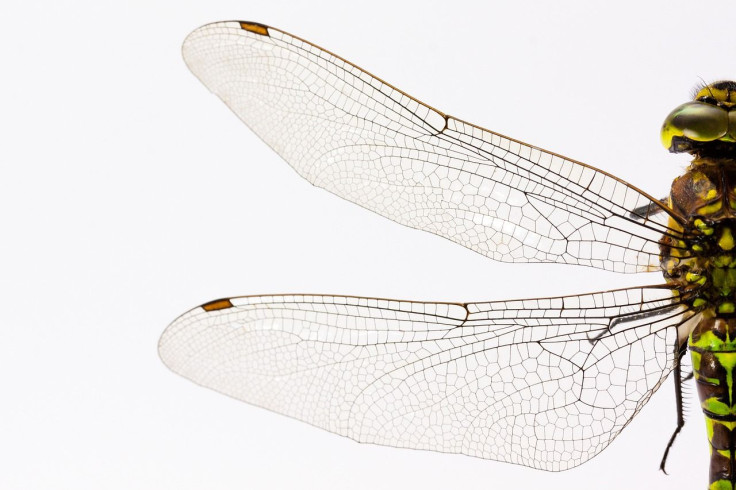Why Dragonflies Are Losing Their Coloration
KEY POINTS
- A study found that male dragonflies respond to warmer climates with less coloration
- Having less pigmentation on their wings can help keep them cool
- Unfortunately, it may cause problems when it comes to attracting mates
A team of researchers has found that male dragonflies are evolving less breeding coloration, and there's a pretty hot reason for it.
Many dragonfly species woo potential mates using the dark patches on their wings, Washington University in St. Louis (WashU) said in a news release. However, in a new study, published in the Proceedings of the National Academy of Sciences, researchers found that in places with hotter climates, male dragonflies have actually been evolving to have less of this important coloration.
This is because as useful as these pigmentations are in helping them to attract mates, they can also heat them up by up to 2 degrees Celsius (about 3.5 degrees Fahrenheit), study lead, Michael Moore of WashU, said. This means that the pigmentation may also cause them to overheat given the warming climate.
For the study, the researchers created a database of 319 dragonfly species, WashU said. They then looked at submitted photos of dragonflies, gathered valuable information about the climate in the locations where they were observed and measured the wing pigmentation on individual dragonflies from 10 specific species.
"Whether they compared species with hotter versus cooler geographic ranges, or compared populations of the same species that live in warmer areas versus cooler areas, the researchers saw the same thing: male dragonflies nearly always responded to warmer temperatures by evolving less wing pigmentation," WashU noted in the news release.
Even when they looked at the data based on cooler and warmer years, they still found that the dragonflies of the same species had less pigmentation during the warmer years.
"Given that our planet is expected to continue warming, our results suggest that dragonfly males may eventually need to adapt to global climate change by evolving less wing coloration," Moore said.
Interestingly, the changes were not observed in female dragonflies. According to Moore, this shows why we shouldn't assume that the sexes will have similar adaptations to climate change.
One problem it can pose is that the female dragonflies might end up mating with male dragonflies of different species since the pigments also help them identify each other.
The study shows another way animals are responding to climate change. However, many animals' adaptations may not be enough in the face of a rapidly changing climate.
Earlier this year, for instance, a team of researchers found that many species evolve heat tolerance more slowly than cold tolerance. Even if they do, the amount of heat that they can adapt to actually has limits.
Simply put, many animals may not be able to adapt fast enough, making them vulnerable to rapid global warming.

© Copyright IBTimes 2024. All rights reserved.












